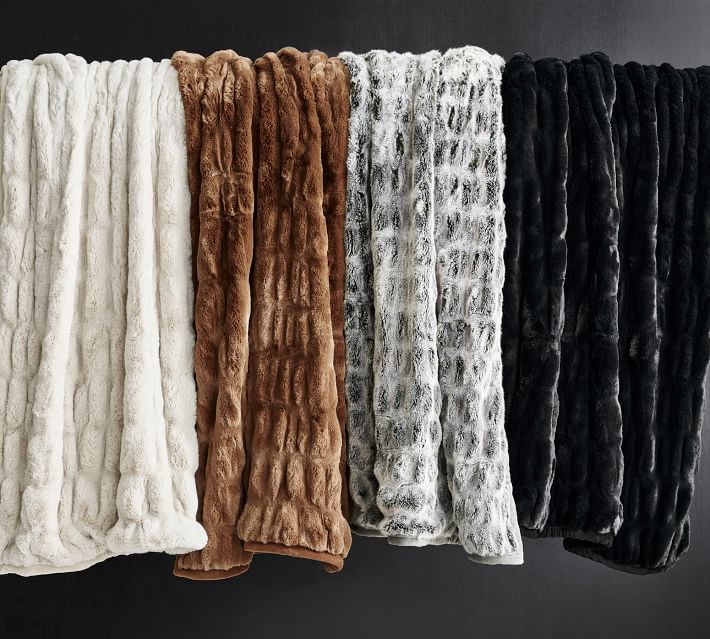Deciding what is most environmentally friendly can be a tough task. It can also be extremely difficult to decide whether morality or the environment is more important. An issue that challenges such ideas is whether real fur or faux fur (plastic fur) is more sustainable. Those supporting the utilization of real fur argue that, both, the process of creating faux fur and its after effects are damaging to the environment. On the other hand, those arguing against real fur discuss the concept of morality and elaborate on how using real fur is the action of animal cruelty. Both types of furs have their pros and cons, but what is the better option?
Weighing our options.
Those in support of real fur tend to argue that the process of the creation of faux fur releases chemicals that harm the environment and that the fur itself is non biodegradable, and therefore harmful and less environmentally friendly than real animal fur. Today’s faux fabric is made up of synthetic fibres… including polyester (Bustle). The process of the creation of polyester uses an abundant amount of petroleum. Polyester alone “uses almost 70 million barrels of oil a year” (Green Living Detective). These synthetic fibers will “emit toxic waste and emissions,” (Green Living Detective). This process is detrimental to the environment because all the emitted toxins will contribute to the amount of greenhouse gases and pollution already affecting our Earth. In addition, it is heavily argued that faux fur is worse than real fur because faux fur is not biodegradable. This means that it will not break down and be reused by the environment, ending up in landfills. Both the process of creating faux fur and the durability of it contribute to the pollution of the Earth, but is real fur the answer?

Those who challenge the production and use of real fur argue that it’s morally incorrect and it’s also damaging to the environment. Real fur is mostly based on animal exploitation (The Overtake). Morality is the primary concern when it comes to the usage of fur. On PETA’s website, there’s an opening statement describing that “animals endure a life of misery, pain, frustration, and fear, and many are skinned alive” in order for their fur to be used as merchandise (The Boar). It’s morally incorrect to murder animals for their fur, who are we to possess them? The animal cruelty behind the skinning of animals is arguably worse than the environmental impacts that faux fur has. In addition, the use of fur also has a negative contribution on the environment. For example, “emissions of nitrous oxide and ammonia from mink manure are a serious issue” (Faunalytics). Nitrous oxide is a greenhouse gas that is “300 times more harmful than carbon dioxide” (CBCNews). The farms and overbreeding of animals release many toxic chemicals into the air, creating a negative environment, just like plastic fur.
Rabbit fur explored during FYS class on October 30, 2021.
Morality and the environment are both at stake. Deciding what is more environmentally friendly is tough. Initially, I believed that real fur was more environmentally friendly because the fur itself is biodegradable and the process does not require petroleum. However, I have learned that not only are animals brutally murdered, but the process also involves toxins going into the atmosphere; which is why I have decided for myself that fur is not the most environmentally friendly option.
Bibliography
Cutler, Lauren. The Boar, 18 Oct. 2020, https://theboar.org/2020/10/fur-fashion-morally-wrong-sustainable-alternative/.
“Faux Fur Ruched Throws.” Pottery Barn, https://www.potterybarn.com/products/faux-fur-ruched-throw-collection/.
Mortillaro, Nicole. “Nitrous Oxide, More Harmful to the Climate than CO2, Increasing in Atmosphere, Study Finds | CBC News.” CBCnews, CBC/Radio Canada, 8 Oct. 2020, https://www.cbc.ca/news/science/nitrous-oxide-climate-1.5753907.
The Green Living Detective One day. “How Green Is It… to Wear Synthetic Fabrics?” Green Living Detective, Green Living Detective, 10 Apr. 2019, https://www.greenlivingdetective.com/how-green-is-it-to-wear-synthetic-fabrics/.
Schneider, Desiree. “Fur Kills Animals, Faux Fur Kills the Environment. What Is Better?” Medium, The Overtake, 26 June 2019, https://medium.com/@overtake/fur-kills-animals-faux-fur-kills-the-environment-what-is-better-6580a1b7ef47.
Sharkey, Lauren. “Is Faux Fur Bad for the Environment?” Bustle, Bustle, 10 Feb. 2020, https://www.bustle.com/p/is-faux-fur-bad-for-the-environment-21784082.

This is a really interesting debate. I think the general stigma around fur is that it is incredibly easy to see the immediate impact of buying a fur coat, something that just doesn’t happen when purchasing things made of faux fur. When there is harm done indirectly or often far away, we don’t really seem to mind. But with animals, and mammals specifically, our emotions get in the way of accurately evaluating the situation.